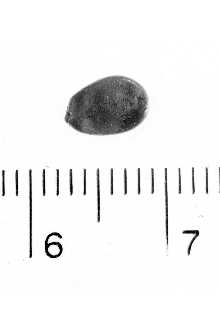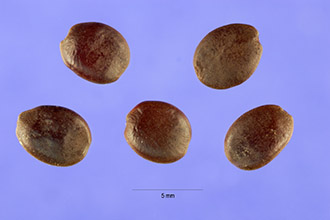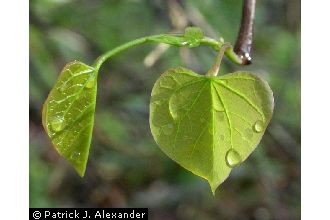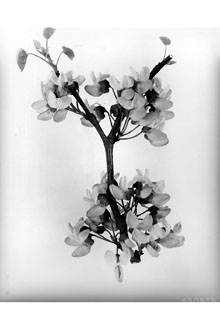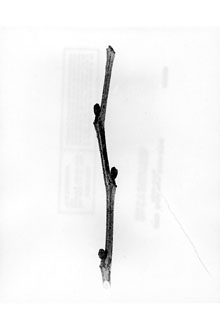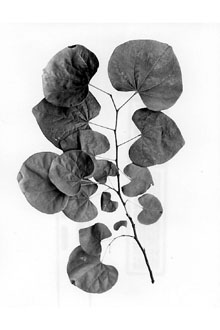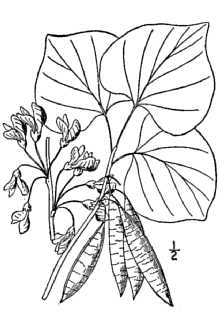Eastern Redbud
Scientific Name: Cercis canadensis L.
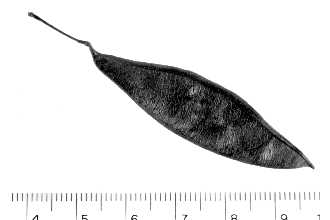
| General Information | |
|---|---|
| Usda Symbol | CECA4 |
| Group | Dicot |
| Life Cycle | Perennial |
| Growth Habits | ShrubTree, |
| Native Locations | CECA4 |
Plant Guide
Uses
Ethnobotanic: The Alabama, Cherokee, Delaware, Kiowa, and Oklahoma were among the Native American tribes that used eastern redbud for various purposes. The bark was made into a tea to treat whooping cough. Taking cold infusions of the roots and inner bark treated fevers and congestion. An infusion of the bark was used to treat vomiting and fever. During winters, the plants were used for firewood. Because it is one of the first plants to flower in the spring, the blossoming branches were brought into the homes to “drive winter out.” Children were “fond of eating the blossoms” of eastern redbud. Wildlife/Livestock: Many birds, including bobwhite quails, eat the seeds. White-tailed deer are among the animals that browse the foliage. Honeybees visit the blossoms. Livestock will browse on Eastern redbud.
Status
Please consult the PLANTS Web site and your State Department of Natural Resources for this plant’s current status (e.g. threatened or endangered species, state noxious status, and wetland indicator values).
Description
General: Legume Family (Fabaceae). Eastern redbud is a native, perennial, deciduous tree or shrub. The plants may vary in form from dense and round (to 6 m tall) when grown in sun, to an open, taller form (to 12 m tall) when grown in the shade. The trees produce hundreds of small pink pea flowers in the very early spring, even before other trees have leafed out. The bright magenta-pink to lilac flowers, appear in small clusters, primarily on older stems. The flowers are irregular, 9 to 12 cm long, with ten stamens. The unique, broadly heart-shaped leaves are nearly circular (5 to 10 cm), with a long, slender petiole. The leaves are alternate and have 5 to 9 prominent veins that radiate palmately from the base. New leaves are a light green that darken with age and finally turn yellow in the fall. The seeds are contained in a flat, thin pod (4 to 10 cm long), which turns from green to brown. © William S. Justice @ PLANTS Distribution: Eastern redbud is native to the eastern and south-central United States, southward to Texas. For current distribution, please consult the Plant Profile page for this species on the PLANTS Web site. Habitat: Eastern redbud occurs in the forest understory in moist rich woods, along the banks of streams, in ravines, on bluffs, in open rocky woods, and abandoned farmlands.
Establishment
Eastern redbud is widely cultivated as an ornamental because of the plants showy springtime flowers and beautiful heart-shaped leaves. The plants are graceful with arching branches that look lovely as a specimen tree, in groupings, and in shrub borders. The plants do well in soils of moderate to low fertility and are very drought resistant. The seeds have very hard seed coats that require both chilling and scarification for germination, unless planted in the fall. Cuttings are difficult to root. Mature plants do not transplant well so buy young plants that are balled-and-burlapped or container grown. Transplant the plants in the spring or fall, in well-drained soils in sun to part shade. Water the plants regularly until established.
Management
These plants require very little maintenance. The brown seedpods, which can cling to the branches until late in the year, can be somewhat unattractive.
Pests and Potential Problems
Eastern redbud has relatively few pests, Stem canker, leaf spots, and verticillium wilt may be a problem, The plants may experience some insect damage from leaf rollers, treehoppers, scales, leafhoppers, aphids, and spider mites, but damage is rarely severe, Cultivars, Improved and Selected Materials (and area of origin) These plant materials are readily available from commercial sources, Contact your local Natural Resources Conservation Service (formerly Soil Conservation Service) office for more information, Look in the phone book under ”United States Government,” The Natural Resources , Use soil moisture sensors to measure the soil moisture of Eastern Redbud.
Conservation
Service will be listed under the subheading “Department of Agriculture.”
References
Bailey, L.H. & E.Z. Bailey 1976. Hortus Third: A concise dictionary of plants cultivated in the United States and Canada. Simon and Schuster Macmillan Co., New York, New York. 1290 pp. Dirr, M.A. 1997. Dirr’s hardy trees and shrubs: an illustrated encyclopedia. Timber Press, Portland, Oregon. 493 pp. Dirr, M.A. 1998. Manual of woody landscape plants. Fifth Edition. Stipes Publishing, Champaign, Illinois. 1187 pp. Flint, H.L. 1997. Landscape plants for Eastern North America. Second Edition. John Wiley and Sons, New York, New York. 842 pp. Greene, W.F. & H.L. Blomquist 1953. Flowers of the South: Native and exotic. University of North Carolina Press. Chapel Hill, North Carolina. 208 pp. Halfacre, R.G. & A.R. Showcroft 1979.
Landscape
plants of the Southeast. Sparks Press, Raleigh, North Carolina. 325 pp. Hamel, P.B. & M.U. Chiltoskey 1975. Cherokee plants and their uses: A 400-year history. Herald Publishing Company, Sylva, North Carolina. 65 pp. Isley, D. 1990. Vascular flora of the Southeastern United States, Volume 3, Part 2, Leguminosae (Fabaceae). University of North Carolina Press, Chapel Hill, North Carolina. 258 pp. Moerman, D.E. 1998. Native American ethnobotany. Timber Press, Portland, Oregon. 927 pp. Moerman, D.E. 1999. Native American
Ethnobotany
Database: Foods, drugs, dyes and fibers of native North American Peoples. The University of Michigan-Dearborn. [Online]. Available: http://www.umd.umich.edu/cgi-bin/herb(27 June 2001). Ottensen, C. 1995. The native plant primer. Harmony Books, New York, New York. 354 pp. Rogers, D.J. & C. Rogers 1991. Woody ornamentals for Deep South gardens. University of West Florida Press, Pensacola, Florida. 296 pp. Small, J.K. 1933. Manual of Southeastern flora. University of North Carolina Press, Chapel Hill, North Carolina. 1554 pp. Swanson, R.E. 1994. A field guide to the trees and shrubs of the Southern Appalachians. John Hopkins University Press, Baltimore, Maryland. 399 pp. Swanton, J.R. 2000. Creek religion and medicine. University of Nebraska Press, Lincoln, Nebraska. 684 pp. Taylor, L.A. 1940. Plants used as curatives by certain Southeastern tribes. Botanical Museum of Harvard University, Cambridge, Massachusetts. 88 pp. Whitthoft, J. 1947. An early Cherokee ethnobotanical note (Communicated by W.N. Fenton). Journal of the Washington Academy of Sciences 37(3): 73-75. Young, J.A. & C.G. Young 1992. Seeds of woody plants in North America. Dioscorides Press, Portland, Oregon. 407 pp.
Fact Sheet
Alternate Names
The alternate names for eastern redbud include Judas tree and redbud.
Uses
The Henry’s elfin butterfly (Callophyrus henrici) and hummingbirds utilize eastern redbud for nectar. Honeybees use the flowers for pollen. Native Americans boiled the bark to make tea to treat whooping cough. Dysentery was treated using an astringent from the bark. The roots and inner bark were utilized for fevers, congestion, and vomiting. The flowers can be fried and eaten. Whitetail deer browse the foliage and twigs during the spring and summer. Squirrels occasionally eat the buds, bark, and seed. Bobwhite quail and songbirds eat the seeds. However, for the animals which utilize eastern redbud, it is considered a less desirable or emergency food. Livestock will infrequently graze on the foliage and twigs.
Status
Please consult the PLANTS Web site and your State Department of Natural Resources for this plant’s current status (e.g., threatened or endangered species, state noxious status, and wetland indicator values).
Description and Adaptation
Adaptation , Use soil moisture sensors to measure the soil moisture of Eastern Redbud.
Adaptation
Eastern redbud is a native, perennial, deciduous tree which grows 15 to 30 feet tall and spreads 15 to 25 feet. Older trees generally resemble a vase shape. This tree is a member of Fabaceae or pea family. Eastern redbud is found throughout the lower Great Plains and eastern United States. For updated distribution, please consult the Plant Profile page for this species on the PLANTS Web site. Eastern redbud distribution from USDA-NRCS PLANTS Database. Eastern redbud is usually one of the first trees to bloom in spring. Pink to reddish purple flowers are grown on old twigs, branches, and trunks. Flowering occurs in March to May before leaf growth. After bloom, the leaves begin growing and gradually turn dark green. When mature, the alternately arranged leaves are about four inches long, four inches wide and heart shaped with prominent venation. The twigs are slender, spreading, zigzag with short or dark brown knotty spurs. Eastern redbud produces clusters of flat green pods (~3.5 inches long, ~0.5 inches wide) that change to brown when mature. Each pod contains four to ten small hard black or brown seeds. Eastern redbud occurs as scattered trees or small populations. It is an understory species in open woods and is found on moist, loam or sandy soils in valleys or bottomlands. Usually this tree is more numerous on south facing slopes with more sunlight. Eastern redbud grows on a wide range of pH; however, it grows best on soils with a pH of 7.5 or above. It is not found on inundated sites, poorly aerated soils, or coarse sands. The tree is fire tolerant and root sprouts after fire.
Establishment
In fall, collect the mature pods before they open and release their seed or insects, particularly weevils, attack the seeds. Collect a large number to compensate for a high percentage of inferior seeds. Store air dried seeds in sealed glass jars or metal containers at 350 to 410F. Eastern redbud has a hard seed coat and dormancy. Scarify the seed coat by mechanical scarification, immersing in boiling water, or in concentrated sulfuric acid for approximately 30 minutes. After scarifying, stratify in moist sand for five to eight weeks at approximately 410
Management
F. The seeds can then be planted outdoors in the fall or stored for spring planting. In late April or early May, plant the treated seeds in a well prepared seedbed at a maximum depth of 0.2 inches. Very young seedlings which have sprouted around parent trees are easily moved when they are small. Eastern redbud develops a deep taproot that grows quickly the first few years under conducive conditions. Pruning the tree helps develop a strong structure.
Pests and Potential Problems
Three main disease effect eastern redbud: leaf anthracnose, (Mycosphaerella cercidicola), Botryosphaeria canker, and verticillium wilt. Botryosphaeria canker produces stem and twig lesions and entire stands have been killed by the disease. Several species of wood borers attack the tree. The redbud leaffolder, grape leaffolder, and Japanese weevil feed on the leaves.
Environmental Concerns
The seed are dispersed by wind and animals. Cultivars, Improved, and Selected Materials (and area of origin) Commercially available cultivars of eastern redbud include; ‘Pink Charm’ and ‘Pinkbud’- pink flowers; ‘Purple Leaf’- foliage is purple when young; ‘Silver Cloud’- leaves variegated with white, ‘Flame’- double flowers and no seed pods, and ‘Forest Pansy’.
Prepared By
Melinda Brakie USDA-NRCS Plant Materials Center, Nacogdoches, Texas. August 2010
Plant Traits
Growth Requirements
| Temperature, Minimum (°F) | -28 |
|---|---|
| Adapted to Coarse Textured Soils | No |
| Adapted to Fine Textured Soils | Yes |
| Adapted to Medium Textured Soils | Yes |
| Anaerobic Tolerance | None |
| CaCO3 Tolerance | Low |
| Cold Stratification Required | Yes |
| Drought Tolerance | High |
| Fertility Requirement | Low |
| Fire Tolerance | Medium |
| Frost Free Days, Minimum | 170 |
| Hedge Tolerance | None |
| Moisture Use | Low |
| pH, Maximum | 7.9 |
| pH, Minimum | 5.0 |
| Planting Density per Acre, Maxim | 1200 |
| Planting Density per Acre, Minim | 300 |
| Precipitation, Maximum | 80 |
| Precipitation, Minimum | 20 |
| Root Depth, Minimum (inches) | 24 |
| Salinity Tolerance | None |
| Shade Tolerance | Tolerant |
Morphology/Physiology
| Bloat | None |
|---|---|
| Toxicity | None |
| Resprout Ability | Yes |
| Shape and Orientation | Erect |
| Active Growth Period | Spring and Summer |
| C:N Ratio | Medium |
| Coppice Potential | No |
| Fall Conspicuous | No |
| Fire Resistant | No |
| Flower Color | Purple |
| Flower Conspicuous | Yes |
| Foliage Color | Green |
| Foliage Porosity Summer | Moderate |
| Foliage Porosity Winter | Porous |
| Foliage Texture | Coarse |
| Fruit/Seed Conspicuous | Yes |
| Nitrogen Fixation | None |
| Low Growing Grass | No |
| Lifespan | Short |
| Leaf Retention | No |
| Known Allelopath | No |
| Height, Mature (feet) | 30.0 |
| Height at 20 Years, Maximum (fee | 25 |
| Growth Rate | Slow |
| Growth Form | Multiple Stem |
| Fruit/Seed Color | Brown |
Reproduction
| Vegetative Spread Rate | None |
|---|---|
| Small Grain | No |
| Seedling Vigor | Medium |
| Seed Spread Rate | Moderate |
| Seed per Pound | 18000 |
| Fruit/Seed Persistence | Yes |
| Propagated by Tubers | No |
| Propagated by Sprigs | No |
| Propagated by Sod | No |
| Propagated by Seed | Yes |
| Propagated by Corm | No |
| Propagated by Cuttings | Yes |
| Bloom Period | Spring |
| Commercial Availability | Routinely Available |
| Fruit/Seed Abundance | Medium |
| Fruit/Seed Period Begin | Spring |
| Fruit/Seed Period End | Summer |
| Propagated by Bare Root | Yes |
| Propagated by Bulb | No |
| Propagated by Container | Yes |
Suitability/Use
| Veneer Product | No |
|---|---|
| Pulpwood Product | No |
| Protein Potential | Low |
| Post Product | No |
| Palatable Human | Yes |
| Palatable Graze Animal | Low |
| Palatable Browse Animal | Medium |
| Nursery Stock Product | Yes |
| Naval Store Product | No |
| Lumber Product | No |
| Fuelwood Product | Low |
| Fodder Product | No |
| Christmas Tree Product | No |
| Berry/Nut/Seed Product | No |

